The Glass House is a home designed by the architect Philip Johnson. It is unique in the way that except for the bathroom, it has no opaque walls, only glass curtain walls.
Working on this project has caused me to become very impressed by the ability of Revit to stream line the post-conceptual part of the design process. The ability to take drawings on paper and transform them into a three dimensional representation of the building composed of the actual components that it would consist of if it was constructed is a powerful tool.
Working on this project has caused me to become very impressed by the ability of Revit to stream line the post-conceptual part of the design process. The ability to take drawings on paper and transform them into a three dimensional representation of the building composed of the actual components that it would consist of if it was constructed is a powerful tool.
Photos of the Actual Building:
Drawings of The Glass House Created in Revit:
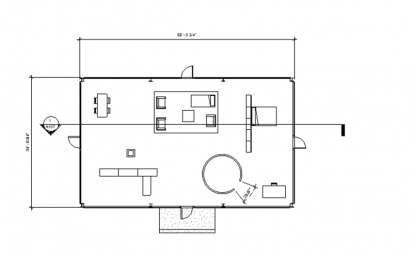
Plan
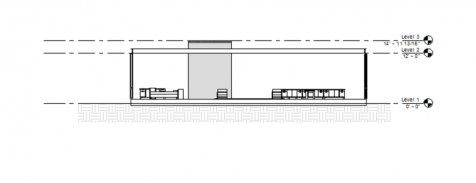
Section A107

North Elevation
Renderings of The Glass House created in Revit:
The architecture 424 class has been a great resource in learning to use Revit. The lessons that we learned about modifying element instances and types to create custom objects were very helpful in the undertaking of this project. One reason this was important was due to unique doors that reach from the floor to the ceiling. Another place that this was crucial was in creating the custom floor and ceiling slabs.
The intuitive interface and informative help menus have also been a great resource. For example, one aspect of the building that I was unsure about how to model was the glass doors in the curtain walls. By using the help menu, I was able to discover that this was accomplished by selecting one of the panels of the curtain wall and changing that part of the glass into a non-curtain wall. It soon became apparent, however, that since I created my curtain wall without using a preset curtain grid, my curtain wall was not divided into selectable panels. However, thanks to additional use of the help menu and the intuitive interface, I was able to discover that I could use the openings tool to remove the area of the curtain wall I needed gone, place a non-curtain wall in that void, and then place the custom door.
One interesting aspect of designing this building was having to discover how the building was actually put together. This was because the building is not constructed using the conventional residential method of using supporting walls. In the end it was apparent that the building's columns are standard wide flange columns and that it has 4 wide flange beams along the exterior edges. This in turn supports a reinforced concrete ceiling slab, which all rests on a brick floor slab, which then rests atop an additional concrete foundation slab.
This photo of one of the corner columns alongside the same view in the Revit model illustrates the way the exposed columns and window mullions meet.
One aspect of Revit that I would like to become more knowledgeable about in the future is rendering. Although I am pleased with how the renderings came out, some aspects could have been more true to the actual building. For example, the steel of the actual Glass House is painted black, while the steel in the Revit model is not.
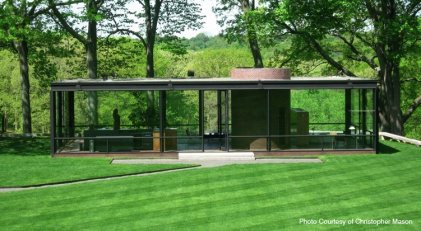
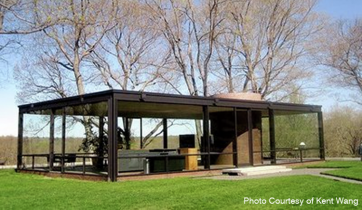
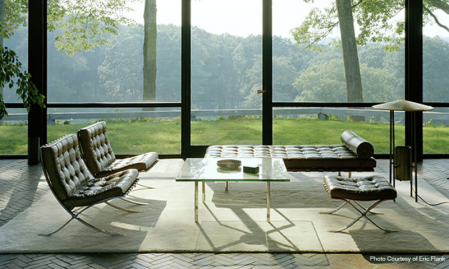
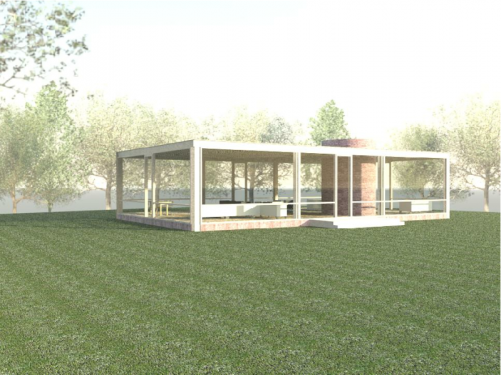
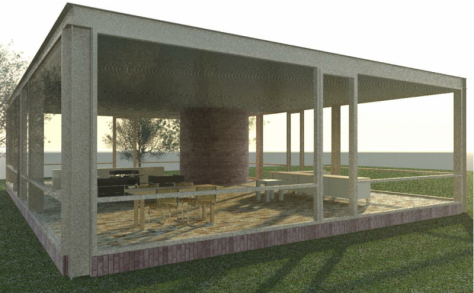
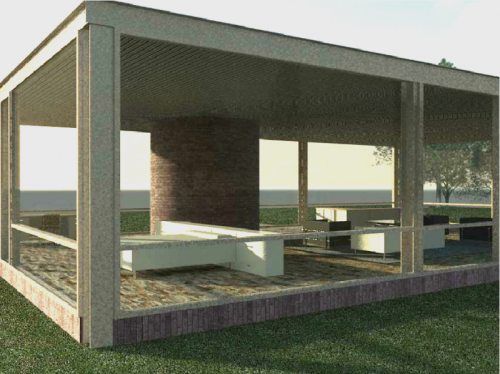
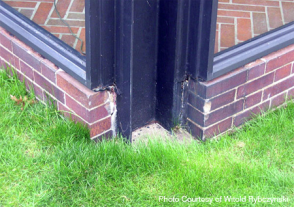
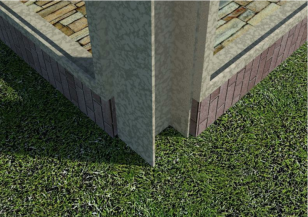
 RSS Feed
RSS Feed